Search the Blog
Categories
- Books & Reading
- Broadband Buzz
- Census
- Education & Training
- Friday Reads
- General
- Grants
- Information Resources
- Library Management
- Nebraska Center for the Book
- Nebraska Libraries on the Web
- Nebraska Memories
- Now hiring @ your library
- Preservation
- Pretty Sweet Tech
- Programming
- Public Library Boards of Trustees
- Public Relations
- Talking Book & Braille Service (TBBS)
- Technology
- Uncategorized
- What's Up Doc / Govdocs
- Youth Services
Archives
Subscribe
Tag Archives: census
2020 Census Update: 99.98% Complete Nationwide
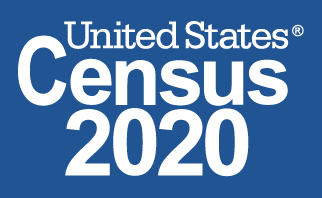
According to updated numbers released by the U.S. Census Bureau today, 99.98% of all housing units and addresses nationwide were accounted for in the 2020 Census as of the end of self-response and field data collection operations on Oct. 15, 2020. In all states, the District of Columbia and the Commonwealth of Puerto Rico, more than 99% of all addresses have been accounted for, and in all but one state that number tops 99.9%.
“The 2020 Census faced challenges like no other decennial census in living memory,” said Secretary of Commerce Wilbur L. Ross, Jr. “Achieving these metrics in the face of severe weather events and a global pandemic is a testament to the determination and ingenuity of the hundreds of thousands of dedicated women and men who worked on the 2020 Census.”
Compared to the final self-response rate of 66.5% for the 2010 Census, 67% were accounted for through self-response to date, with the rest having been accounted for through our Nonresponse Followup (NRFU) operation.
“America stepped up and answered the call: shape your future by responding to the 2020 Census,” said Dr. Steven Dillingham, Director of the Census Bureau. “Generally, better data comes from self-response, but after a decade of global decline in census and survey participation along with the challenges presented to communities by COVID-19, we had not expected to exceed the 2010 self-response rate. That we did is a testament to the American people, our nearly 400,000 national and community partners, and very importantly our staff.”
“The Census Bureau was able to meet and overcome many challenges because of our innovative design and use of new technology, but it could not be done without the unflinching resolve of our staff,” Dillingham continued. “We thank everyone on the team for their contributions, from the census takers and field staff going the extra mile to reach those hardest to count, to the dedicated operational leadership at headquarters and around the country working around the clock to maintain and protect our systems, process the data, oversee the operation, and get the word out about the importance of the 2020 Census.”
“We are especially proud of the hard work done to bring the state of Louisiana over 99% complete despite the devastating effects of hurricanes Laura and Delta, and of the partnership with American Indian and Alaska Native tribal governments to get 99.77% of the NRFU workload on their lands done, despite closures due to the pandemic.”
“Hundreds of millions of people were counted in the 2020 Census, and statisticians and data quality experts are now busy making sure everyone was counted once, only once, and in the right place,” Dillingham continued. “The Census Bureau will use the best methodologies available to resolve the very small number of unresolved addresses and to ensure that our data products are accurate.”
Each census, the Census Bureau produces coverage estimates and conduct extensive assessments that we share with the public. The completion rates are just early indicators. For more information on the 2020 Census, including use of proxy and administrative records, please see our updated FAQs.
The Census Bureau is working hard to process the data in order to deliver complete and accurate state population counts as close as possible to the Dec. 31, 2020, statutory deadline.
Data collection for the 2020 Census ended at 11:59 p.m. Hawaii Standard Time on Oct. 15, 2020 (5:59 a.m. EDT). Paper responses are still arriving and will be processed if postmarked by October 15, and received at the processing center no later than October 22.
For more information, visit 2020census.gov.
Posted in Books & Reading, Census, Education & Training, General, Information Resources, What's Up Doc / Govdocs
Tagged census
Leave a comment
Free ALA webinar: “Last Chance for a Complete Count”

| ALA is offering a webinar for library staff: 2020 Census: Last Chance for a Complete Count, on July 8 at 2 pm ET. Registration is free. After the session, the recording will be posted at ala.org/census. New guide on adapting census outreach in response to COVID-19: ALA released a new publication, “Libraries and the 2020 Census: Adapting Outreach in Response to COVID-19 (PDF).” The free guide explains changes to the 2020 Census process and highlights opportunities for libraries to adapt census outreach activities. Check your community’s response rate: How does your area compare in its response rate to date? Which neighborhoods are lagging behind? Find current data to inform your outreach and messages on the 2020 Census Response Rate Map or the Census 2020 Hard to Count Map. Share your event on the Census Counts calendar: Is your library planning a 2020 Census event (including virtual events)? Submit it to the national Census Counts calendar. Check the calendar for other events from partners in your community. |
Four Ways New Technology Is Revolutionizing the 2020 Census

From scribbled answers in 1790 to online responses in 2020, innovation has always been part of the Census. The Census Bureau has always been a leader in using, adapting and developing new technologies, but the 2020 Census will be the most sophisticated and high tech yet.
The census began in 1790 with collected information handwritten by U.S. Marshals visiting outposts in every corner of the new nation. Every decade since, the ways the U.S. Census Bureau has tried to meet its goal of counting every person living in the United States have undergone changes as dramatic as the growth of the nation itself.
Through the centuries, the decennial count progressed from in-person collections of handwritten answers to mass mailings of paper questionnaires in 1970. Among other changes along the way: creation of an electrical punch card tabulator for the 1890 Census and the first use by a government agency of the world’s first modern computer – the UNIVAC 1 – for the 1950 Census. It was developed by engineers John W. Mauchly and J. Presper Eckert, whose corporation was a division of Remington Rand.
In the previous century, Herman Hollerith, a former Census Office employee, invented a punch card tabulating machine used by the Census Bureau from the 1890 Census forward. Hollerith founded the Tabulating Machine Company, which eventually became International Business Machines (IBM).
America Counts spoke with Robert Colosi, a mathematical statistician in the Census Bureau’s Decennial Statistics Studies Division, about ways technology is revolutionizing the census.
He shared four specific changes that have had a major impact on how the Census Bureau counts everyone once, only once, and in the right place.
Innovation 1: Using Satellite Imagery to Check Addresses
Before the Census Bureau can count every person in the country, it must first collect addresses for every housing unit. One way the Census Bureau uses this address list is to mail census materials, including invitations to respond online, by phone or by mail.
Census Bureau employees used to “canvass” neighborhoods in person, jotting down new addresses and correcting old ones on paper.
This long-running operation, known as Address Canvassing, is one of the ways the Census Bureau updates its Master Address File or MAF. The Census Bureau also works with the United States Postal Service (USPS) to confirm already existing addresses on file.
Address canvassing was costly and time-consuming. Employees traveled a total of 137 million miles to update the MAF before the 2010 Census.
“The number of miles we traveled was astronomical,” Colosi said. “We’re not going to do that for the 2020 Census.”
In 2015, the Census Bureau began using aerial images from a network of satellites.
The Census Bureau developed computer software that allows employees in offices to compare satellite images from 2010 to new ones taken in real time. This helps them identify new houses, apartment buildings and other units to verify in the traditional Address Canvassing operation.
Thanks to the new In-Office Address Canvassing system, census workers reviewed 100% of all addresses in the United States for the 2020 Census and validated 65% in the office, removing them from the in-field workload.
That means workers needed to canvas fewer neighborhoods in person, saving time and money.
Address listers or canvassers hit the streets in August 2019 and completed the operation two months later, on track for the 2020 Census.
Innovation 2: Introducing Online Self-Response
The 2020 Census is the first time everyone has the option to respond to the census online as well as by phone or mail.
The Census Bureau has an Internet Self-Response tool designed to make it easy to complete the questionnaire online and keep responses secure. Directions for responding online will be included in letters, postcards and other mailings sent to most homes beginning in mid-March.
Every response submitted on the internet is encrypted. That means data are changed into a code that only Census Bureau data analysts can read. Responses travel through a secure cloud computer network and the Census Bureau locks them in a “digital vault”.
The Internet Self-Response instrument, the website for completing the census online, is available in English and 12 other languages.
Census Bureau employees, called census response representatives will also provide computers and tablets for access to the Internet Self-Response tool at places like libraries, community centers, health care centers and places of worship. This is particularly helpful in rural and other areas with limited or no internet access.
Innovation 3: Introducing Mobile Devices to Enumeration
From collecting census responses and job applications to storing questionnaires, the Census Bureau has used millions of pieces of paper to gather and file information. Now it relies much more on technology – and much less on paper.
In 2020, census takers who go door-to-door to help people respond will collect information on smartphones using a custom application created by the Census Bureau.
“The Systems Engineering and Integration Team created 52 systems in our ‘system of systems,’” Colosi said. “There’s a whole group of systems related to that one contract of enumeration and operations control. All of it was built by Census Bureau staff and contractors.”
To protect privacy, we encrypt all data and devices require two-factor authentication to be unlocked.
When a device connects to the internet, encrypted data immediately transmits to the Census Bureau’s digital vault – and is no longer on the device. Encrypted data are only stored on the devices until they connect to the internet.
Software in the smartphones also provides specific routes for census takers to follow to visit homes. Optimizing routes in this way helps census takers do their jobs more efficiently.
If a device is lost or stolen, the Census Bureau will remotely wipe it clean of all applications and information.
Innovation 4: New Ways to Protect Data
The Census Bureau is the leading source of quality data about the nation’s people and economy in its many surveys and programs, including the 2020 Census.
Opportunities to share and protect its data continue to grow with technology and innovation, particularly through data mashups.
Data mashups are algorithms that combine different data sources to expand graphical understanding of the data but can also find the origin of a particular set of data.
To protect against that, the Census Bureau has developed processes to protect its data from people who might try to make such mashups. Its Disclosure Avoidance System helps prevent improper disclosure of data. This addition is one of several advances the Census Bureau has made to safeguard an individual’s data.
“When we produced products in the old days, we didn’t have super high-tech and savvy users,” Colosi said. “The idea of computing data mashups to try and combine different data sources to find individual responses was not common. Now it is.”
All responses to the 2020 Census are confidential and protected by law. Title 13 of the Federal Code prohibits the Census Bureau from publishing or disclosing any private information, including names, addresses and telephone numbers.
“Our cybersecurity meets the latest, highest standards for protecting your information,” Census Bureau Chief Information Officer Kevin Smith said. “We work with industry experts to continually review and refine our approach to make sure we are staying ahead of threats and ensuring quick response. From the moment we collect your responses, our goal — and legal obligation — is to keep them safe.”
Census Bureau employees take an oath to keep your answers confidential. Violators face up to five years in prison and $250,000 in fines.
Posted in Books & Reading, Census, Education & Training, General, Information Resources, Technology, What's Up Doc / Govdocs
Tagged census
Leave a comment
Census Bureau Launches COVID-19 Data Hub
  The U.S. Census Bureau has released a new resource page on Census.gov to help federal The U.S. Census Bureau has released a new resource page on Census.gov to help federal agencies, businesses, and communities make decisions related to the COVID-19 pandemic. Similar to the Census Bureau’s resources pages created during natural disasters, this resource page includes information on population demographics, economic indicators and businesses. Learn More It features a new interactive data hub that centralizes already-released data from the American Community Survey and the County Business Patterns program to facilitate users’ access to data useful in pandemic-related decision making. The data hub, released as a beta version, will be updated periodically as the situation changes and as feedback is received from users.  You can sign up for COVID-19 Data Hub Updates here. You can sign up for COVID-19 Data Hub Updates here.  |
Posted in Books & Reading, Census, Education & Training, General, Information Resources, Technology, What's Up Doc / Govdocs
Tagged census
Leave a comment
2020 Census Updates

Nebraska is still FIRST in Census responses in our region! Here’s all the latest news from the Census Bureau:
Posted in Books & Reading, Census, Education & Training, General, Information Resources, What's Up Doc / Govdocs
Tagged census
Leave a comment
NCompass Live: 2020 Census Outreach for Libraries
The 2020 Census is happening right now! We’ll discuss tips and tricks for ‘2020 Census Outreach for Libraries’ on next week’s FREE NCompass Live webinar, on Wednesday, May 13, 10:00am-11:00am CT.
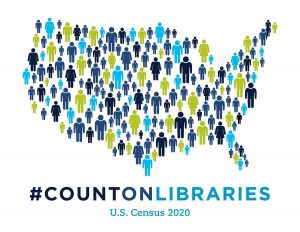 The Morton-James Public Library in Nebraska City, NE, was awarded a Library Census Equity Fund Grant from the American Library Association to bolster library services to hard-to-count communities and help achieve a complete count in the 2020 Census. Join us to hear more about the grant, how the library is using the funding, and to learn ways that libraries can help educate community members on the importance of answering the 2020 Census questionnaire.
The Morton-James Public Library in Nebraska City, NE, was awarded a Library Census Equity Fund Grant from the American Library Association to bolster library services to hard-to-count communities and help achieve a complete count in the 2020 Census. Join us to hear more about the grant, how the library is using the funding, and to learn ways that libraries can help educate community members on the importance of answering the 2020 Census questionnaire.
Presenters: Denise Davis, Librarian, Morton-James Public Library, Nebraska City, NE; Mary Sauers, Government Information Services Librarian, Nebraska Library Commission
Upcoming NCompass Live shows:
- May 20 – Reading for Justice: A Database for YA & Youth Literature
- May 27 – Pretty Sweet Tech – How to Make Digital Literacy Less Boring
- June 3 – Automating Virtual Student Library Cards
- June 10 – Identity and Impostor Syndrome in Library Makerspaces
- June 17 – Who are These People & Why are They in My Library? Using Empathy & UX to Understand Your Library Patrons
For more information, to register for NCompass Live, or to listen to recordings of past events, go to the NCompass Live webpage.
 NCompass Live is broadcast live every Wednesday from 10am – 11am Central Time. Convert to your time zone on the Official U.S. Time website. The show is presented online using the GoToWebinar online meeting service. Before you attend a session, please see the NLC Online Sessions webpage for detailed information about GoToWebinar, including system requirements, firewall permissions, and equipment requirements for computer speakers and microphones.
NCompass Live is broadcast live every Wednesday from 10am – 11am Central Time. Convert to your time zone on the Official U.S. Time website. The show is presented online using the GoToWebinar online meeting service. Before you attend a session, please see the NLC Online Sessions webpage for detailed information about GoToWebinar, including system requirements, firewall permissions, and equipment requirements for computer speakers and microphones.
Posted in Census, Education & Training, General, What's Up Doc / Govdocs
Tagged #2020Census, #CountOnLibraries, census, NCompLive
Leave a comment
The 2020 Census is Still Going Strong!
2020 Census Infogram
Posted in Census, Education & Training, General, Information Resources, Technology, What's Up Doc / Govdocs
Tagged census
Leave a comment
2020 Census Operational Adjustments

The 2020 Census is underway and more households across America are responding every day. Over 70 million households have responded to date, representing over 48% of all households in America. In light of the COVID-19 outbreak, the U.S. Census Bureau is adjusting 2020 Census operations in order to:
• Protect the health and safety of the American public and Census Bureau employees.
• Implement guidance from federal, state and local authorities.
• Ensure a complete and accurate count of all communities.
The Census Bureau temporarily suspended 2020 Census field data collection activities in March. Steps are already being taken to reactivate field offices beginning June 1, 2020, in preparation for the resumption of field data collection operations as quickly as possible following June 1.
In-person activities, including all interaction with the public, enumeration, office work and processing activities, will incorporate the most current guidance to promote the health and safety of staff and the public. This will include recommended personal protective equipment (PPE) and social distancing practices.
Once 2020 Census data collection is complete, the Census Bureau begins a lengthy, thorough and scientifically rigorous process to produce the apportionment counts, redistricting information and other statistical data products that help guide hundreds of billions of dollars in public and private sector spending per year.
In order to ensure the completeness and accuracy of the 2020 Census, the Census Bureau is seeking statutory relief from Congress of 120 additional calendar days to deliver final apportionment counts.
Under this plan, the Census Bureau would extend the window for field data collection and self-response to October 31, 2020, which will allow for apportionment counts to be delivered to the President by April 30, 2021, and redistricting data to be delivered to the states no later than July 31, 2021.
Posted in Census, Education & Training, General, Information Resources, Technology, What's Up Doc / Govdocs
Tagged census
Leave a comment
American Democracy Project–Video Contest to Promote the 2020 Census

When: April 08, 2020 – April 24, 2020
Time:01:00 PM – 05:00 PM:
The American Democracy Project is sponsoring a video contest to promote awareness for the U.S. Census! Prizes will be awarded to 1st, 2nd, and 3rd place entries; all videos will be judged on accuracy, creativity, and use of visuals/sound. All entries should be submitted to adp@unk.edu by April 24, 2020.
For more instructions, visit https://docs.google.com/document/d/1z3uFwe4jtJgN25Ju2CAE-ovybZ-8UdMIvMFmfEtXrU8/edit?usp=sharing.
Good luck!
Contact:Lydia Behnk
(402) 843-6801
behnkll@lopers.unk.edu
Posted in Census, Education & Training, General, Information Resources, Programming, Technology, What's Up Doc / Govdocs
Tagged census
Leave a comment
Today, April 1st, 2020, is CENSUS DAY!

The official Census Day for the 2020 Census has finally arrived!
PLEASE respond to your invitation to participate in the 2020 Census!
Even though we are living in a different time right now, it is still vitally important that we all respond to the Census. For the next 10 years the results from the 2020 Census will determine how billions of dollars will be distributed back to the states, and how local, state, and federal government will be affected.
You can respond online, mail, and phone–so PLEASE respond to the 2020 Census today!
Posted in Census, General, Information Resources, Technology, What's Up Doc / Govdocs
Tagged census
Leave a comment
A History of the Census in the United States : Part 23
The Twenty-Third Census: Census Day was April 1, 2010.

Enumeration
The 2010 census questionnaire was one of the shortest in history – asking just 10 questions of all households in the United States and Island Areas related to name, gender, age, race, ethnicity, relationship, and whether you own or rent your home. Collection of data about education, housing, jobs, etc. collected by previous censuses long-form questionnaires are now collected by the U.S. Census Bureau’s annual American Community Survey.
In addition to the reduced number of questions, the Census Bureau announced it would count same-sex married couples in June 2009. When noting the relationship between household members, same-sex couples who are married could mark their spouses as being “Husband or wife”, the same response given by opposite-sex married couples. An “unmarried partner” option was available for couples (whether same-sex or opposite-sex) who were not married.
Marketing and Promotional Efforts
Following the success of Census 2000’s advertising, the 2010 census featured a $133 million, 4-month advertising campaign. Although officially beginning January 18, 2010, the advertising campaign debuted the night of January 17 during NBC’s Golden Globe Awards broadcast.
In total, the 2010 advertising campaign included television, radio, print, outdoor and the Internet advertising, produced in an unprecedented 28 languages. More than half of the budgeted advertising would target media consumed by minority and ethnic audiences. The Census Bureau anticipated that the campaign would reach the average person 42 times with messages about the importance of participating in the census.
From Super Bowl XLIV and the 2010 Winter Olympics, to popular primetime shows, the 2010 Census advertising campaign represented the most extensive and diverse outreach campaign in U.S. history. The advertising rollout also included updates on other outreach efforts, such as the Census in Schools program, “Portrait of America” Road Tour, and the national and regional partnership programs targeted at reaching hard-to-count populations.
Other key elements of the 2010 Census Integrated Communications Campaign included:
- A national road tour with 13 vehicles traveling to key events across the country, such as NASCAR races, the Super Bowl, and parades.
- A 2010 Census Web Site.
- “Teach Census Week” in schools nationwide in February, part of the Census in Schools program.
- Nationally broadcasted public service announcements airing nationwide.
- Outreach activities launched by national and local corporate, foundation, government, and nonprofit organizations.
Key 2010 Census Dates
September 26, 2005 – The Census Bureau awards a $500+ million contract to the Lockheed Martin Corporation for the 2010 Census Decennial Response Integration System (DRIS).
September 6, 2007 – The Census Bureau awarded its 2010 Census communications contract, worth an estimated $200 million, to Draftfcb of New York.
March 30, 2009 – The Census Bureau launches a massive operation to verify and update more than 145 million addresses as it prepares to mail out 2010 census questionnaires.
July 23, 2009 – The Census Bureau began printing 2010 Census questionnaires.
October 26, 2009 – The Census Bureau launches the 2010 Census Web Site.
January 17, 2010 – First 2010 Census television advertisement airs during NBC’s Golden Globe Awards broadcast.
January 18, 2010 – The 2010 census advertising campaign officially launches.
January 25, 2010 – Remote Alaska enumeration begins.
March 1, 2010 – 2010 census questionnaires begin arriving in mailboxes throughout the United States and Island Areas.
March 8, 2010 – Advance letters are mailed to 120 million addresses nationwide, notifying households that 2010 Census forms will be arriving March 15 -17.
April 1, 2010 – Census Day. Households are asked to supply data in their census questionnaire that is accurate as of April 1.
April 30, 2010 – Enumerators begin door-to-door operations to collect census data from households to follow up with households that either didn’t mail back their form or didn’t receive one.
July 30, 2010 – The toll-free telephone assistance line is closed, ending 2010 census data collection. More than 130,000 interviews were completed via the toll-free line.
August 10, 2010 – The Census Bureau announces that it will return $1.6 billion to the U.S. Treasury as a result of lower-than-expected census costs.
October 21, 2010 – The final 2010 census mail response rate is announced as 74 percent – matching Census 2000’s rate.
December 21, 2010 – The Census Bureau announces the 2010 population counts and delivers the apportionment counts to the president.
Further Information
- “The 2010 Decennial Census: Background and Issues,” Congressional Research Service, February 3, 2011.
Information provided from Census.gov
Posted in Books & Reading, Census, Education & Training, General, Information Resources, What's Up Doc / Govdocs
Tagged census
Leave a comment
A History of the Census in the United States : Part 22
The Twenty-Second Census: Census Day was April 1, 2000.

Enumeration
The short form contained only seven questions, the shortest census questionnaire since 1820. The long form asked 52 questions of approximately 1 in 6 households (approximately a 17 percent sample of the population). In previous censuses, responses to the race question were limited to a single category; in 2000, for the first time, respondents could check as many boxes as necessary to identify their race. A 1996 law mandated a new question on grandparents as care givers. Questions on disability were expanded to include hearing and vision impairment and problems with learning, remembering or concentrating. Questions on children ever born, source of water, sewage disposal and condominium status, were dropped; the 1990 census short form question on rent and property value became a long form question.
Efforts to Improve Participation
To counter a decline in the questionnaire mail-back rate, the Census Bureau embarked on an aggressive paid advertising campaign, awarding a $167 million contract to the Young and Rubicam Company for national and local print, television and public advertising campaign. This campaign consisted of more than 250 television, print, radio, outdoor, and other advertisements in 17 languages; it reached 99 percent of all U.S. residents. By the end of the campaign, the census message – “This is your future. Don’t leave it blank.” – had been seen or heard an average of 50 times per person. This campaign, along with an aggressive non-response follow-up program, brought the mail-back rate up to about 67 percent.
There were additional options for responding to the census. People receiving the short form could respond on the Internet, and about 70,000 households did so. Telephone questionnaire assistance centers provided questionnaire help in 6 languages and took responses to the short form over the phone.’
Reengineered Census Plan for 2000
Following the costly litigation generated by the 1980 and 1990 censuses, particularly that which sought statistical adjustment of the census counts to correct for persons estimated to have been missed or duplicated, the Census Bureau designed a plan for the 2000 census that it believed would eliminate the possibility of litigation. The Census Bureau’s May 1995 plan for a “reengineered census” was the culmination of a four-year process of discussion and review of census plans by a broad spectrum of experts, advisors, and stakeholders. The plan was further refined and on February 28, 1996, Commerce and Census Bureau officials made public.
The Plan for Census 2000
The plan called for using statistical sampling techniques in two principal ways. The first was to alter the traditional 100-percent personal visit of non-responding households during nonresponse followup (NRFU). Instead, a small percentage of non-responding households would be followed up on a sample basis. Information from this sample would be used to estimate the number of persons and their characteristics in the remaining non-responding households.
The second involved the Census Bureau taking a sample of 750,000 housing units to be matched to housing unit questionnaires obtained from mail and telephone responses as well as personal visits. The goal of this quality check survey was to develop adjustment factors for persons estimated to have been missed or duplicated in the census and correct the census counts to produce one set of numbers. This was to be a “one-number census,” corrected for net coverage errors, that is, Integrated Coverage Measurement (ICM). ICM was a significant departure from 1990, when the results of the post-enumeration survey (PES) were used to produce a separate set of statistically adjusted counts after the delivery of the apportionment counts and redistricting data. This resulted in two competing sets of population numbers.
Congressional Opposition to the Census 2000 Plan
Beginning with the fiscal year (FY) 1997 appropriations process, the congressional majority included language in appropriations legislation that would prohibit the use of sampling in Census 2000 or the expenditure of funds for Census 2000 sampling-related planning activities.
Debate over the sampling issue postponed passage of the Commerce Department’s FY 1998 appropriations bill until the end of November 1997, two months into the new fiscal year. With the threat of a stalemate between the congressional leadership and the Clinton administration in the debate over the use of statistical sampling in Census 2000, the two sides reached a compromise in the enacted legislation. The legislation, among other things, permitted the Census Bureau to continue to plan for sampling, while directing the agency to plan for a census without statistical sampling. This was later referred to as “dual-track” planning.
The law also set up an eight-member “Census Monitoring Board” to observe and monitor all aspects of the planning and implementation of Census 2000.
Litigation and Revision to the Census 2000 Plan
Two lawsuits were filed in February 1998 – including one filed by the U.S. House of Representatives – that challenged the constitutionality and legality of the planned uses of sampling to produce the apportionment counts. In both cases, the federal district courts decided for the plaintiffs. The Department of Commerce sought review of the district court decisions by the United States Supreme Court. The Supreme Court agreed to hear the cases, and oral argument took place on November 30, 1998. On January 25, 1999, the Court held in Department of Commerce v. U.S. House of Representatives that the Census Bureau’s proposed plan to use statistical sampling in the decennial census for purposes of determining congressional apportionment violates the Census Act (the Census Bureau’s authorizing statute).
Thus, the Census Bureau could no longer pursue its Census 2000 plan that included the Integrated Coverage Measurement (ICM) program and sampling for nonresponse followup. However, following the Supreme Court ruling, the Census Bureau issued a revised plan in which it stated that it planned to produce statistically adjusted data for non-apportionment uses of census data, including redistricting. But in March 2001, following the delivery of the apportionment counts, the Census Bureau recommended against the use of the adjusted data for redistricting, because of concerns regarding their accuracy. The secretary of commerce accepted the recommendation and determined that the unadjusted data would be released as the Census Bureau’s official redistricting data. In October 2001, after considering the possible use of the adjusted data for non-redistricting purposes – for example, their incorporation in the Census 2000 long-form (sample) data products – the Census Bureau director rejected the use of the adjusted data for such purposes.
Technological Advances
The Internet became the principal dissemination medium for 2000 census data. All four of the detailed data files, now called Summary Files, were available to be downloaded as soon as they were released. Individual tables could be viewed through the Census Bureau’s online database, known as the American FactFinder. Additionally these files were available for purchase on CD-ROM and DVD. The number of printed publications was reduced and the number of printed pages in the report series was by about one-tenth of the 1990 census publication program.
Further Information
- The History of Census 2000 is published in two volumes. Volume 1 [PDF 14.3MB] contains chapters one through six, and Volume 2 [PDF 5.7MB] contains chapters seven through twelve.
- Population Profiles of the United States: America At the Close of the 20th Century [PDF 2.05MB]
Information provided from Census.gov
Posted in Books & Reading, Census, Education & Training, General, Information Resources, What's Up Doc / Govdocs
Tagged census
Leave a comment
Nebraska is #1 in 2020 Census Response Rate!

Currently, Nebraska is #1 in the number of people who have responded to the 2020 Census! Let’s keep that going by responding to the Census today!
Even though we have a lot on our minds right now, the 2020 Census is still vitally important! Over the next 10 years, the numbers collected from this year’s Census will help determine how federal funds are distributed to your state.
PLEASE RESPOND to the 2020 Census today!
Are you curious about how other states are responding to the 2020 Census? Stay up to date with a map of self-response rates from across the United States. Start here: 2020 Census Response Rates
Posted in Census, Education & Training, General, Information Resources, Technology, What's Up Doc / Govdocs
Tagged census
Leave a comment
A History of the Census in the United States : Part 21
The Twenty-First Census: Census Day was April 1, 1990.
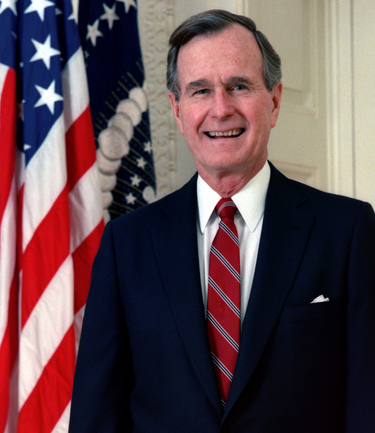
The Census Bureau relied on extensive user consultation prior to the census to guide its efforts to refine both the long and short form questionnaires and the resulting data products. The agency held close to 100 meetings with groups including interested citizens, state agencies and legislatures, and public and private organizations throughout the country. It also solicited recommendations from federal agencies.
Enumeration
The 1990 census used two questionnaires: A short form asked 13 questions to 100 percent of the population and a long form asked 45 questions to 20 percent. Questions on the long form covered topics as diverse as marital history, carpooling arrangements, number of stories in their dwelling place, presence of elevators, and type of cooking and water-heating fuel used. Questions about the presence of air conditioning, the number of bathrooms, and type of heating equipment were dropped from the housing section of the 1990 census.
An additional question on congregate housing (such as, “Does the monthly rent include any meals?”) was added and the question on disability was revised, replacing the 1980 question on ability to use public transportation with one on ability to go outside of the home alone and to take care of personal needs.
Efforts to Improve Coverage and Completeness
Americans were alerted to the importance of responding to the 1990 census by extensive public television, radio, and print advertising. Promotion activities included local “complete count” committees, information kits and lesson plans for schools (Census in Schools), for churches, local government outreach and partnerships, and pro bono public service announcements, costing approximately $67 million.
The Census Bureau built upon its “T-Night” and “M-Night” itinerate person enumeration programs from 1980 with “S-Night” (“S” standing for Streets/Shelters). S-Night was a one-night sweep, conducted in major cities, of homeless shelters nationwide and other areas where the homeless were known to congregate. Many in the media billed this event, which took place on March 20, 1990, as a “homeless census,” although there is no way to determine the proportion of the homeless population that was counted on “S-Night.”
Following the 1980 census, the Census Bureau initiated plans to study the possibility of statistically adjusting the 1990 census to correct for the undercount. As a part of a planned post enumeration survey (PES) the Census Bureau would complete a contemporaneous survey of households and compare the results to information from the census for the same block clusters. With these data, the Census Bureau hoped to be able to develop adjustment factors to compensate for the anticipated undercount.
In October 1987, the undersecretary of commerce for economic affairs announced that, because the Commerce Department did not intend to statistically adjust the census for either undercounts or overcounts, he was canceling the Census Bureau’s adjustment-related planning activities for the 1990 census.
In November 1988, New York City and a coalition of state and local interests joined forces to file a lawsuit to compel the Census Bureau to reconsider the use of statistical adjustment of the population totals in light of the expected undercount from the 1990 census. In July 1989, the Commerce Department and the New York plaintiffs reached a partial resolution of the lawsuit. The Census Bureau would reinstate the PES (but with a smaller sample size than originally planned) and use it to produce population data that had been adjusted for the projected undercount. These data would be judged against the unadjusted data by an expert panel – the Secretary of Commerce’s Special Advisory Panel (SAP), which would provide advice on whether to adjust the 1990 population figures.
Technological Advances
The Topologically Integrated Geographic Encoding and Referencing System (TIGER), developed by the U.S. Geological Survey and the Census Bureau, was introduced for the 1990 Census. It is a computerized representation of various map features such as streets, and rivers, and census geographic boundaries and their attributes such as latitude, longitude and address ranges. TIGER was used to geographically code addresses into appropriate census geographic areas, as well as to produce the many different maps required for data collection and tabulation.
In 1985 the Census Bureau was the first government agency to make information available on CD-ROM, a new and relatively untested medium. Six years later, detailed census data, which for several decades had been available only to organizations with large mainframe computers, was made accessible by anyone with a personal computer. As in 1980, 1990 census data were available in print, on computer tape, and on microfiche. In addition to these media and CD-ROM, selected data were also made available online through two vendors of online services- DIALOG and CompuServe.
Intercensal Activities
Demographic analysis showed that the 1990 census had an estimated net undercount of 1.8%, with an appreciably larger net undercount rate for African Americans than for other residents. The PES sampled 165,000 households in 7,500 blocks, and the Census Bureau compared this data with data from the census for the same block clusters. By comparing the data from these two sources, Census Bureau statisticians were able to estimate the numbers and characteristics of those missed or improperly counted by the enumeration. From there, the statisticians developed statistically adjusted population counts down to the block level.
In June 1991, the Undercount Steering Committee, a Census Bureau group charged with advising the director on adjustment recommended using the adjusted population counts. Following this recommendation, the director herself came out in favor of adjustment. However, the undersecretary of commerce for economic affairs, who oversees the Census Bureau disagreed. The secretary of commerce’s SAP split, four votes to four.
Responding to the mixed recommendations, the secretary of commerce announced in July 1991 that he did not find the evidence in favor of using adjusted counts convincing. He decided that the 1990 census would use the unadjusted totals.
Following announcement of the secretary’s decision, the New York plaintiffs resumed their lawsuit. The federal district court decided in favor of the Department of Commerce in April 1993. Plaintiffs appealed the ruling, and the U.S. Court of Appeals rejected the district court ruling and ordered that the case be returned to the district court for further proceedings. The issue was finally taken up by the Supreme Court, which in March 1996 upheld the secretary’s decision not to adjust the 1990 census counts, but did not rule on either the legality or constitutionality of the use of statistical adjustment in producing the apportionment counts.
Further Information
- A detailed procedural history of the 1990 census is available in Procedural History: 1990 Census of Population and Housing [63 MB]
- Reports and statistics from the 1990 census
Information provided from Census.gov
Posted in Books & Reading, Census, Education & Training, General, Information Resources, What's Up Doc / Govdocs
Tagged census
Leave a comment
Data.Census.gov Replacing American FactFinder
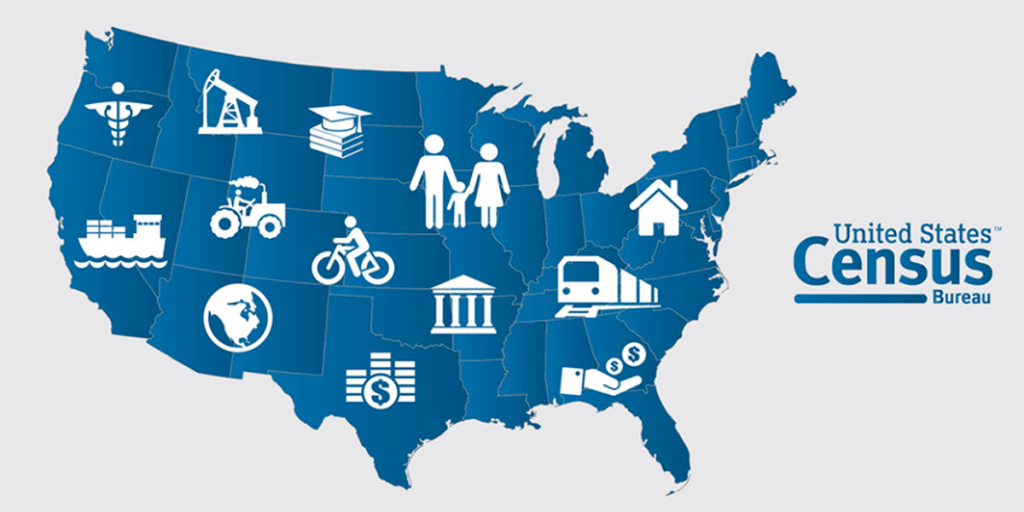
American FactFinder (AFF) will be decommissioned and offline on March 31, 2020.
What is data.census.gov?
Data.census.gov is the new platform to access data from the U.S. Census Bureau. The vision for data.census.gov is to improve the customer experience by making data available from one centralized place so that data users spend less time searching for data content and more time using it.
This vision stems from overwhelming feedback that the Census Bureau has received to simplify the way customers get data. The Census Bureau continues to work on the customer experience so that it is not necessary for data users to know Census Bureau jargon or perform a complicated search to find the data that they need.
Transition From American FactFinder
American FactFinder (AFF) will be decommissioned and offline on March 31, 2020.
Data previously released on AFF are now being released on the U.S. Census Bureau’s new dissemination platform, data.census.gov. Since we are a developing site, not all the data from AFF have been migrated over to data.census.gov. Below is an overview of our data migration status that will be updated regularly.
| AFF Data Sets Coming Soon to data.census.gov | Until then, find it here: |
| American Community Survey: | |
| 2010 to 2015 1-Year Selected Population Profiles | Availability Spreadsheet |
| 2011-2015 5-Year Selected Population Tables | |
| 2011-2015 5-Year American Indian & Alaska Native | |
| 2010 Decennial SF2 and PL | FTP |
| 2000 Decennial | FTP |
| New Data Sets Coming to data.census.gov | Until then, find it here: |
| Population and Housing Unit Estimates | API and Program Page |
| Annual Survey of Manufactures | API |
| Public Sector (Govs) | FTP |
| Commodity Flow Survey | Program Page |
| Older Data Sets Not Available on data.census.gov | Find it Here: |
| American Community Survey Data Prior to 2010 | FTP (Detailed Tables) |
| Nonemployer Data Prior to 2012 | API |
| County Business Patterns Prior to 2012 | API and FTP |
| Economic Census Prior to 2012 | FTP |
| Economic Census Island Area Prior to 2012 | FTP |
| Commodity Flow Survey Prior to 2012 | Program Page |
| 2010 EEO | FTP |
| Products No Longer Available |
| Quick Tables (QT) |
| Geographic Comparison Tables (GCT) |
| Ranking Tables (GRT) |
| Geographic Header (G001) |
Posted in Census, Education & Training, General, Information Resources, What's Up Doc / Govdocs
Tagged census
Leave a comment
Update: Libraries and the 2020 Census

| The Census form opens March 12 (That’s tomorrow!) Beginning March 12, households will begin receiving 2020 Census mailings and can start responding. These key resources can help your library staff prepare: Have 2 minutes? Read ALA’s “Responding to the Census (PDF)” Have 10 minutes? Watch this new “2020 Census Training Video for Public Library Staff” from libraries in Cuyahoga County, Ohio Have 2 hours? Read ALA’s “Libraries’ Guide to the 2020 Census (PDF)” Find ALA’s full collection of resources at ala.org/census. |
| Invite your elected officials to fill out their Census at the library Make sure your elected officials know how your library is supporting a complete count in the 2020 Census! One idea: invite your elected officials to fill out their own Census form at the library. It’s a great photo opportunity – and they can share it to spread the word about the Census and how the library can help. You can use ALA’s template (DOC) to invite your local, state, and federal officials. Be sure to coordinate with your library director and communications or government relations staff. |
| Grant opportunity from the National League of Cities The National League of Cities is accepting applications for grants for Census activities. Libraries are eligible to apply if they are a city agency or are partnering with a city government (get a letter from a mayor near you). Apply as soon as possible, as applications are being reviewing on a rolling basis. |
| New Census materials from Sesame Street and Dr. Seuss Looking for materials to use in your Census outreach with children and families? Check out new free materials from Sesame Workshop and Seussville. For more resources, visit Count All Kids and the Census Bureau. |
| Coming soon: Mobile Questionnaire Assistance Later this month, the Census Bureau will begin its Mobile Questionnaire Assistance operation in locations across the country. The Census Bureau may contact libraries about setting up Mobile Questionnaire Assistance at your location. To learn more, see the Census Bureau’s fact sheet. If you have questions or would like to invite Mobile Questionnaire Assistance to your library, contact your local Census Bureau Partnership Specialist. Note that Mobile Questionnaire Assistance will be available in limited areas, targeting communities with low self-response rates. |
| Special report in American Libraries magazine The cover story in this month’s American Libraries magazine is a special report on the 2020 Census. To learn more about what libraries across the country are doing, take a look! |
NCompass Live: The 2020 Census and Your Library
‘The 2020 Census and Your Library’ is the topic of next week’s FREE NCompass Live webinar on Wednesday, March 11 at 10am Central Time.
 The 2020 Census will be the first time that an online response option will be available. With so many households lacking internet connectivity, libraries will play a very important part in achieving a complete and accurate count in their communities. Census results help determine how billions of dollars in federal funding are allocated to states and local communities. Join us to learn what your library can do to help.
The 2020 Census will be the first time that an online response option will be available. With so many households lacking internet connectivity, libraries will play a very important part in achieving a complete and accurate count in their communities. Census results help determine how billions of dollars in federal funding are allocated to states and local communities. Join us to learn what your library can do to help.
Presenter: Mary Sauers, Government Information Services Librarian, Nebraska Library Commission.
Upcoming NCompass Live shows:
- March 18 – Teen Summer Camps: Challenging Traditional Programming for Teens
- March 25 – Pretty Sweet Tech – Chatbot Demonstration Using Scratch
- April 1 – Beta Testing for Social Wellbeing
- April 8 – How to Add Movement to Library Programming
- April 15 – Amplified Advisory with Video Book Talks
For more information, to register for NCompass Live, or to listen to recordings of past events, go to the NCompass Live webpage.
 NCompass Live is broadcast live every Wednesday from 10am – 11am Central Time. Convert to your time zone on the Official U.S. Time website. The show is presented online using the GoToWebinar online meeting service. Before you attend a session, please see the NLC Online Sessions webpage for detailed information about GoToWebinar, including system requirements, firewall permissions, and equipment requirements for computer speakers and microphones.
NCompass Live is broadcast live every Wednesday from 10am – 11am Central Time. Convert to your time zone on the Official U.S. Time website. The show is presented online using the GoToWebinar online meeting service. Before you attend a session, please see the NLC Online Sessions webpage for detailed information about GoToWebinar, including system requirements, firewall permissions, and equipment requirements for computer speakers and microphones.
A History of the Census in the United States : Part 20
The Twentieth Census: Census Day was April 1, 1980.
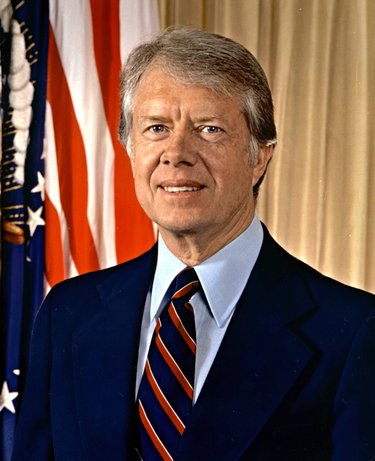
Enumeration
Due to the success of the mail-out/mail-back questionnaire in 1970 the program was expanded for 1980 with about 95 percent of the U.S. population now enumerated in this manner.
The 1980 short form contained 7 population questions and 11 housing questions; the long form contained an additional 26 population and 10 housing inquiries. A question on Spanish or Hispanic origin or descent was added to the 100-percent questions for the first time; in 1970 this question was asked of only 5 percent of the population.
The 1980 census also included two small surveys. The Components of Inventory Change Survey obtained information on the number and characteristics of housing units that changed or stayed the same between 1973 and 1980. The Residential Finance Survey collected data on mortgages, shelter costs, selected housing characteristics and owner characteristics.
Efforts to Improve Coverage and Completeness
An extensive public service advertising campaign directed by the Census Bureau’s Census Publicity Office, which was established in 1978, focused on increasing the public’s awareness of the census and encouraging people to complete and mail back their questionnaires. The Census Bureau secured the free services of the Advertising Council, which in turn hired the firm of Ogilvy & Mather to develop the campaign.
Additionally, the Census Bureau made a special effort to enumerate historically undercounted groups during two programs, “M-Night” (“M” for mission) and “T-Night” (“T” for transient). On M-Night, specially trained enumerators counted people staying in homeless shelters, soup kitchens, bus and rail stations, dormitories, and others. On T-Night, the enumeration focused on hotels and motels with permanent residents.
Technological Advances
The Census Bureau developed the State Data Center Program to simplify public access to data available on computer tapes. Agreements between state governors and the director of the Census Bureau committed the agency to provide free copies of any Census Bureau electronic and printed information and products to the states; the states, in turn, agreed to develop a network of affiliate organizations (state executive departments, chambers of commerce, councils of governments, university research departments or libraries) by which census information would be delivered to local users. By the mid-1980’s all states were participating in the program, which encompassed about 1,200 state and local organizations.
Intercensal Activities
Demographic analysis of the 1980 census showed that once again the census, despite reaching the overwhelming majority of people in the United States, undercounted the population, this time by about 1.2 percent. More troubling, the estimated net undercount rate for African Americans was 3.7 percentage points higher than that for all other races combined.
Before the enumeration process had finished, the city of Detroit sued, demanding that statistical adjustment be used to compensate for those estimated by the Census Bureau to have been missed or improperly counted. Shortly thereafter, several other states and localities, including the city and state of New York, also filed suit. The Census Bureau announced in the fall of 1980 that it did not plan to adjust its population totals using statistical methods because it could not be sure of the number and distribution of illegal aliens and other undercounted groups.
The New York suit would eventually become the most prominent case; a federal district court ruled in the plaintiffs’ favor in late 1980, ordering the Census Bureau to adjust its numbers to correct for the undercount. The Supreme Court stayed this and other rulings in December 1980, allowing the Census Bureau to report its unadjusted figures to the president. A federal appeals court finally ruled, in 1987, that the census figures should not be adjusted to account for the undercount because the Census Bureau’s decision not to adjust was not arbitrary and capricious.
Further Information
- A detailed procedural history of the 1980 census is available in Procedural History: 1980 Census of Population and Housing [ZIP 80MB]
- Reports and statistics from the 1980 census.
Information provided from Census.gov
Posted in Books & Reading, Census, Education & Training, General, Information Resources, What's Up Doc / Govdocs
Tagged census
Leave a comment
A History of the Census in the United States : Part 19
The Nineteenth Census: Census Day was April 1, 1970.
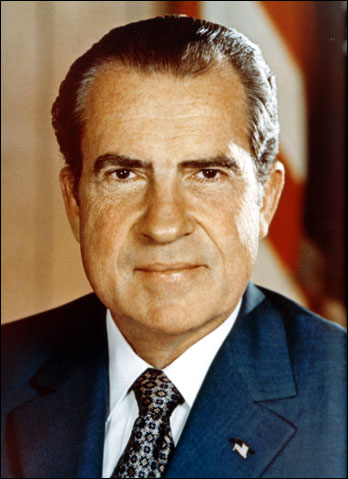
In 1966, the Census Bureau solicited suggestions from its advisory committees and from the general public about the makeup of the census and the availability of the resulting data products. It instituted a series of 23 local public meetings around the country to broaden the scope of its efforts, which resulted in numerous proposals for additional inquiries about the scope and structure of the census, and interest in increasing data products published, particularly for smaller areas such as blocks.
Enumeration
Studies after the 1950 and 1960 censuses revealed that those censuses had undercounted certain segments of the population. Researchers also noted a growing distrust of government and resistance to responding to the census, despite an increasing need for accurate information in both the private and public sectors. In large measure, the increased need for data resulted from the federal government’s reliance on population and other information collected by the census when distributing funds to state and local governments. In an effort to reduce the complexity of its products, the Census Bureau reduced the number of inquiries on the long-form questionnaire from 66 to 23.
The Census Bureau created an address register for densely settled areas that U.S. Post Office employees who were familiar with their routes were instructed to correct and update as needed. The register was also used to ensure that all housing units were accounted for when enumerators had completed their assignments.
The U.S. Post Office delivered census questionnaires with instruction sheets to every household several days prior to Census Day. In areas with a substantial number of Spanish-speaking households, a Spanish-language version of the instruction sheet was also enclosed. For the first time, a separate question on Hispanic origin or descent was asked, but only of a 5 percent sample of the population.
Also for the first time, residents of urban and surrounding areas were instructed to mail their forms back to the Census Bureau where enumerators reviewed them and used follow-up interviews to check on missing or incorrect responses. Rural householders received questionnaires in the mail, but were asked to hold the form for pickup by an enumerator. A letter explaining the need for the data collected and emphasizing the confidentiality of responses accompanied all census questionnaires.
Sampling
Only 5 questions were asked of all individuals: relationship to household head, sex, race, age, and marital status. Other questions were asked of a 15 percent sample and still others of a 5 percent sample. Questions common to both samples resulted in a 20 percent sample.
Technological Advancement
Computerized address lists, called Address Coding Guides, helped assign census geographic codes to questionnaires.
A major innovation for the 1970 Census was the production of a series of computer tape files, called “Counts.” Counts one, two, and three contained complete count data for block groups/enumeration districts, census tracts and minor civil/census county divisions, and blocks, respectively. The fourth through sixth Counts provided sample data for geographic areas of varying population size. The Census Bureau also produced six Public Use Microdata Sample files, each containing complete information for a small sample of the population; roughly two million individuals. A variety of public and private institutions participated in the Census Bureau’s Summary Tape Processing Center Program, a loose-knit group of organizations that processed data from the 1970 census computer tapes.
Further Information
- A detailed procedural history of the 1970 census are available in Procedural History: 1970 Census of Population and Housing [ZIP 165MB]
- A wide variety of historical statistics from this and other decades is available in Historical Statistics of the United States: Colonial Times to 1970. It is available as a PDF [74.4MB] or 2-part ZIP file: Part I [52.2MB] | Part II [66.1MB].
- Reports and statistics from the 1970 census.
Information provided from Census.gov
Posted in Books & Reading, Census, Education & Training, General, Information Resources, What's Up Doc / Govdocs
Tagged census
Leave a comment
A History of the Census in the United States : Part 18
The Eighteenth Census: Census Day was April 1, 1960.
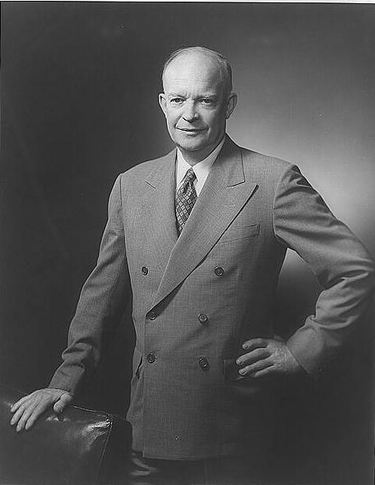
Enumeration
1960 marked the birth of the first mail-out census. Earlier censuses had used self-enumeration on a limited scale, but 1960 was the debut for this technique as a primary method for the collection of population and residential data. The postal service delivered questionnaires to every occupied housing unit. Householders were asked to complete the questionnaire and hold it for an enumerator to pick up.
Enumeration efforts were divided into two stages. The first stage concentrated on the quick collection of a few data items for every person and dwelling unit- information available from responses to questions on the questionnaire that had been delivered to every household. The second stage focused on the collection of more detailed economic and social information from a sample of households and dwelling units. Second stage questionnaires were hand-delivered by enumerators when they came to pick up the first form. Households receiving the second questionnaire were asked to complete the form and mail it to their local census office in postage-paid envelopes provided by enumerators.
In areas of low population density, the two-staged enumeration was combined to allow enumerators to collect and record sample data at the same time they came to fill out the general questionnaire.
Sampling
Additional sample questions were asked of 25 percent of the population. In urban areas (accounting for about 80 percent of the nation’s population), enumerators carried questionnaires containing the sample population and housing questions for every fourth housing unit. If the units were occupied, the householders were asked to complete the sample questionnaires and mail them to district offices. If the units were vacant, the enumerators completed the questionnaires.
The greater use of sampling meant that the totals for some less populated areas were subject to moderate amounts of sampling variation, which did not significantly impair the usefulness of the statistics gathered. Using a 25 percent sample of households eliminated nearly 75 percent of the processing expenses that would otherwise be required.
Additional questions, which had been discussed but not included in several past censuses, focusing on place of work and means of transportation to work were added in 1960.
Technological Advancement
Computers processed nearly all data from the 1960 census. For the first time, the Census Bureau used a film optical sensing device for input to computers (FOSDIC). This machine “read” and converted to code on magnetic tape data appearing on returned questionnaires thus eliminating the time and expense for the previously necessary step where clerks entered the data on punch cards. The questionnaires for 1960 were designed so that respondents could indicate their answers by marking small corresponding circles on the page. The completed questionnaires were photographed onto microfilm with automatic cameras; FOSDIC then read the blackened dots (which appeared as clear holes on the negative film) and transferred the data they represented to magnetic tape for the computer at a speed of 3,000 items per minute. Later versions of the FOSDIC device were able to process up to 70,000 items per minute.
Further Information
- A detailed procedural history of the 1960 census is available in 1960 Censuses of Population and Housing: Procedural History [66.7 MB]
- A wide variety of historical statistics from this and other decades is available in Historical Statistics of the United States: Colonial Times to 1970. It is available as a PDF [74.4MB] or 2-part ZIP file: Part I [52.2MB] | Part II [66.1MB].
- Reports and statistics from the 1960 census.
Information provided from Census.gov
Posted in Books & Reading, Census, Education & Training, General, Information Resources, What's Up Doc / Govdocs
Tagged census
Leave a comment

